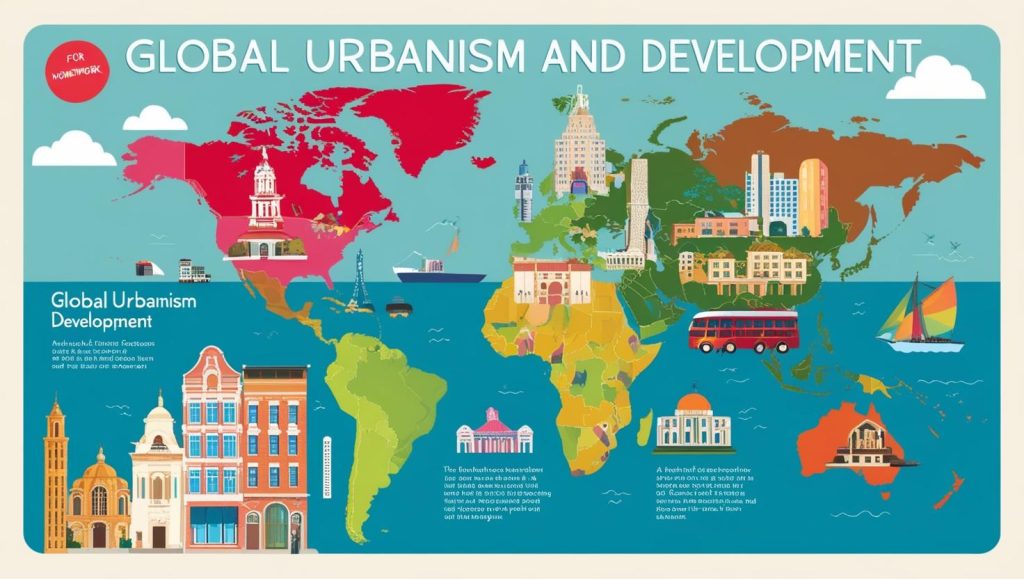Introduction
Global urbanism and development encompass the study of urbanization, city planning, infrastructure, sustainability, and socio-economic factors influencing urban spaces worldwide. As cities continue to grow at an unprecedented rate, understanding their development is crucial for students studying urban planning, geography, and environmental studies. This guide provides Global Urbanism and Development Homework Help to aid students in navigating complex urbanization topics.

Understanding Global Urbanism and Development
1. Urbanization Trends and Patterns
Urbanization refers to the increasing population shift from rural to urban areas. Some key global urbanization trends include:
- Megacities Growth: Cities with populations exceeding 10 million, such as Tokyo and New Delhi, are expanding rapidly.
- Smart Cities Initiatives: Integration of technology for better city management and sustainability.
- Urban-Rural Migration: Driven by job opportunities, education, and healthcare accessibility.
External Resources:
2. Urban Infrastructure and Development
Infrastructure plays a key role in the functionality of cities. Important aspects include:
- Transportation Systems: Public transit, highways, and pedestrian pathways.
- Water and Sanitation: Access to clean water and waste management services.
- Energy Supply: Renewable energy integration and grid modernization.
3. Sustainable Urban Planning
Sustainable cities aim to minimize environmental impact while enhancing livability. Key principles include:
- Green Building Designs: LEED-certified structures and eco-friendly materials.
- Public Green Spaces: Parks, community gardens, and urban forests.
- Mixed-Use Development: Combining residential, commercial, and industrial zones for walkability.
External Resources:
4. Economic and Social Aspects of Urbanization
Cities act as economic engines and social hubs. Critical factors influencing urban economies include:
- Employment Opportunities: Cities drive job creation and economic growth.
- Housing and Gentrification: Rising property costs impact affordability.
- Cultural Diversity: Urban areas foster multicultural interactions and innovation.
5. Challenges in Global Urbanism
Despite advancements, urbanization presents challenges such as:
- Urban Sprawl: Uncontrolled expansion leading to traffic congestion and pollution.
- Slums and Informal Settlements: Housing shortages force millions into inadequate living conditions.
- Climate Change Resilience: Urban areas must adapt to rising sea levels and extreme weather.
Importance of Studying Global Urbanism and Development
Understanding urbanization is vital for designing sustainable cities, improving quality of life, and addressing global challenges like climate change and population growth.
External Resources:
How to Get Global Urbanism and Development Homework Help
Students looking for academic support in urban studies can explore:
- Online Courses: Coursera, EdX, and FutureLearn offer urban planning programs.
- Tutoring Services: Platforms like Chegg and TutorMe provide expert guidance.
- University Resources: Academic libraries, study groups, and research papers.
Conclusion
Global urbanism and development shape the future of cities and human settlements. By understanding urban trends, infrastructure, sustainability, and socio-economic dynamics, students can contribute to better urban policies and planning. For additional Global Urbanism and Development Homework Help, explore online resources and academic support services.


